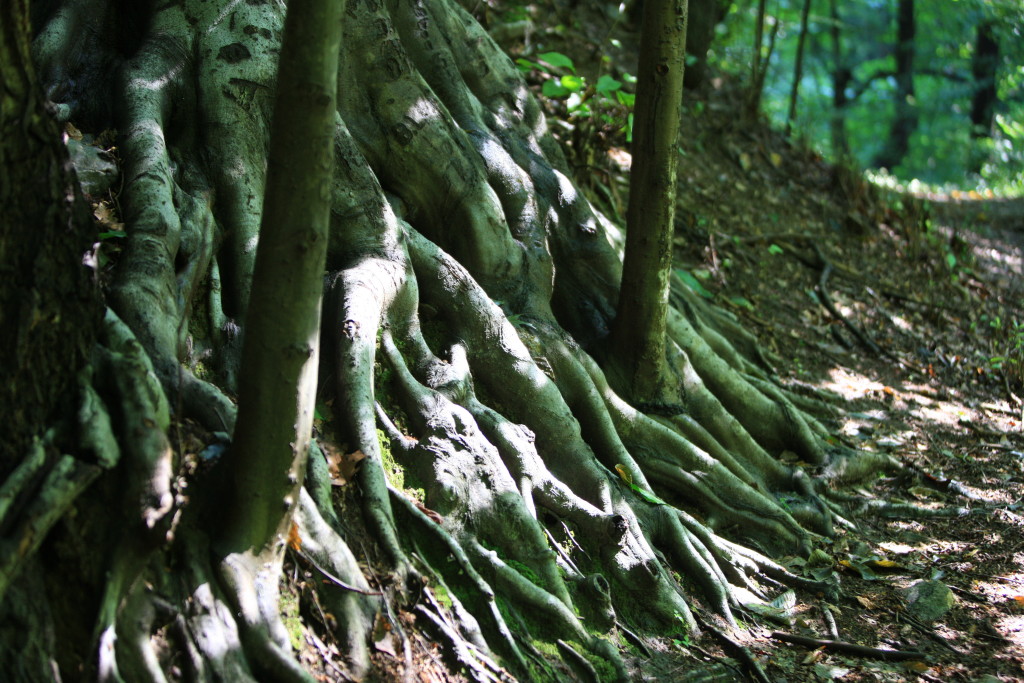
By Andrew Kirkpatrick, Manager of Land Stewardship
If you take a walk along Smith Run, coming up Ravine Loop below Penn’s Native Acres, the hillsides where the beeches, oaks and maples grow show signs of distress. The structural roots of the trees are visible at the soil line when they should be tucked away cozily wrapped in the warm blanket of leaf litter and organic rich soil. Instead, because of exotic invasive earthworms, which can be observed by scraping away the thin layer of leaves on the ground, the roots are exposed and left to fend for themselves in all of the elements; freezing winter winds, driving rains, and blazing sun. If you look up, the impact on the trees is apparent. Bare branches and diminished canopy reveal their stresses. The trees are dying.
In healthy, undisturbed forest soil, we would discover a universe of fungus, microorganisms, bacteria, and insects thriving. All of these elements facilitate the healthy growth and development of plant roots. The vast root mat matrix of the organic horizon (the top layer of healthy soil) in the forest acts like a gigantic sponge that collects water when it rains and holds it in storage for trees to use in the drier months of the year.
However, in highly disturbed areas like the Schuylkill Center, the organic horizon of the soil is absent. Soil horizon is a technical term for the classification of the cake-like layers of soil. The organic horizon is missing here because hundreds of years of agricultural use have long since removed the original rich soil and left mostly thin, mineral soil at the top of the profile. In fact, parts of our property were in farmland almost until the Center’s founding in 1965. The forest has not been able to redevelop the O horizon as it might have otherwise, largely due to the activity of invasive earthworms.
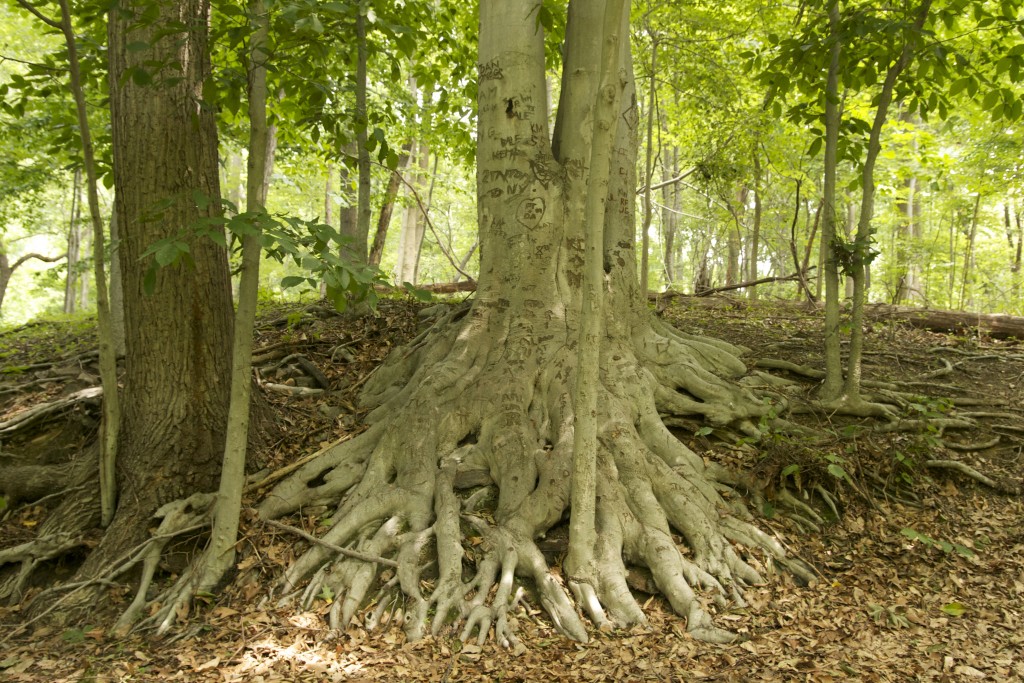
photo by Julia Aguilar
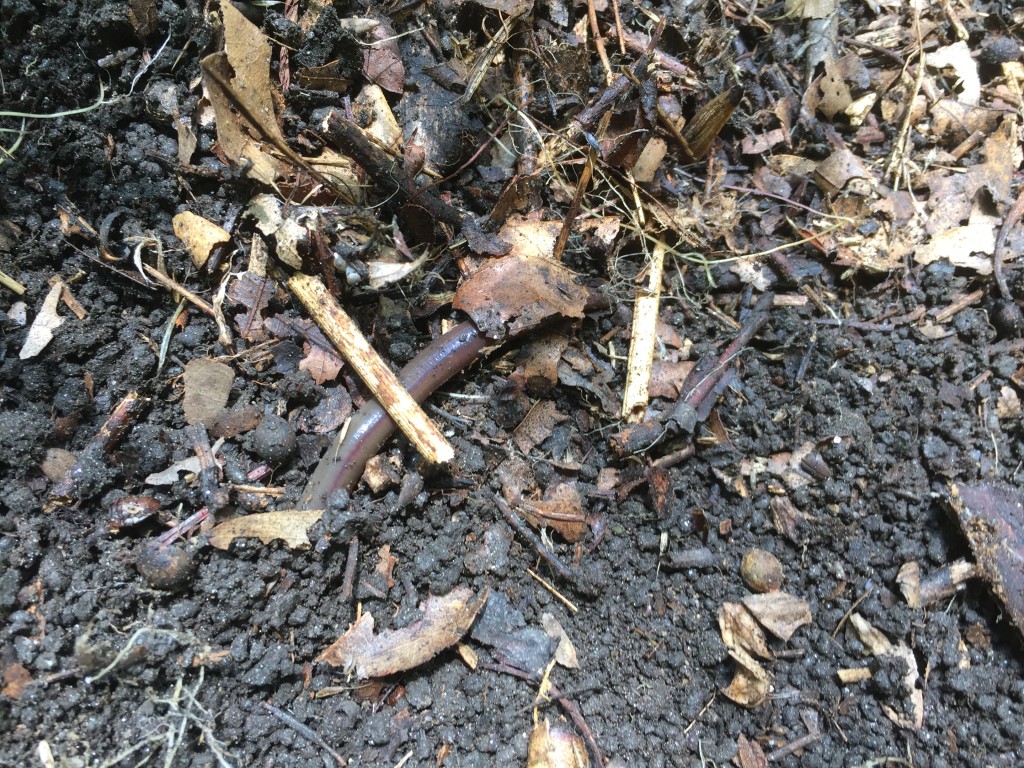
Invasive earthworm and castings
The invasive earthworms are much larger than our native ones, tunnel deeper into the earth and voraciously devour the leaf litter that would accumulate annually in the fall, break down over time to replenish the soil, and rebuild the O horizon. So what is left is a loose accumulation of worm castings on a destabilized base that washes away into our streams every time it rains, carrying many nutrients with them. And when the dry times of the year arrive, the trees have no reserve of nutrients to draw upon. Instead our forest is stressed and vulnerable to attack from pests and diseases that it would otherwise be able to fend off.
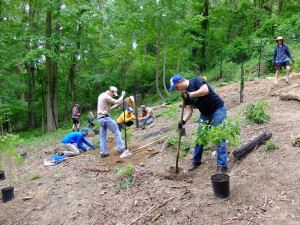
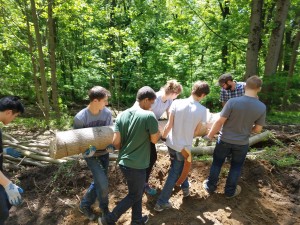 We can address these problems by improving the soil and providing the roots of trees with a healthy environment to grow and develop. In our Fox Glen restoration site, as we planted new trees we covered the ground around them with wood chips to help the roots retain moisture. The wood chips will break down over time and add to the organic content of the soil.
We can address these problems by improving the soil and providing the roots of trees with a healthy environment to grow and develop. In our Fox Glen restoration site, as we planted new trees we covered the ground around them with wood chips to help the roots retain moisture. The wood chips will break down over time and add to the organic content of the soil.
If we want our forest at the Schuylkill Center to survive climate change and the increasing stresses that come from an urban environment, we must help it to be as resilient as possible by replacing the missing sponge.
About the author
 Andrew has a master’s degree in landscape architecture and ecological restoration from Temple University. He hiked the Appalachian Trail from Georgia to Maine in 2005-2006.
Andrew has a master’s degree in landscape architecture and ecological restoration from Temple University. He hiked the Appalachian Trail from Georgia to Maine in 2005-2006.
Photo by Heather Fowler, WHYY
An excerpt from this piece was published in our summer newsletter in June 2017.
